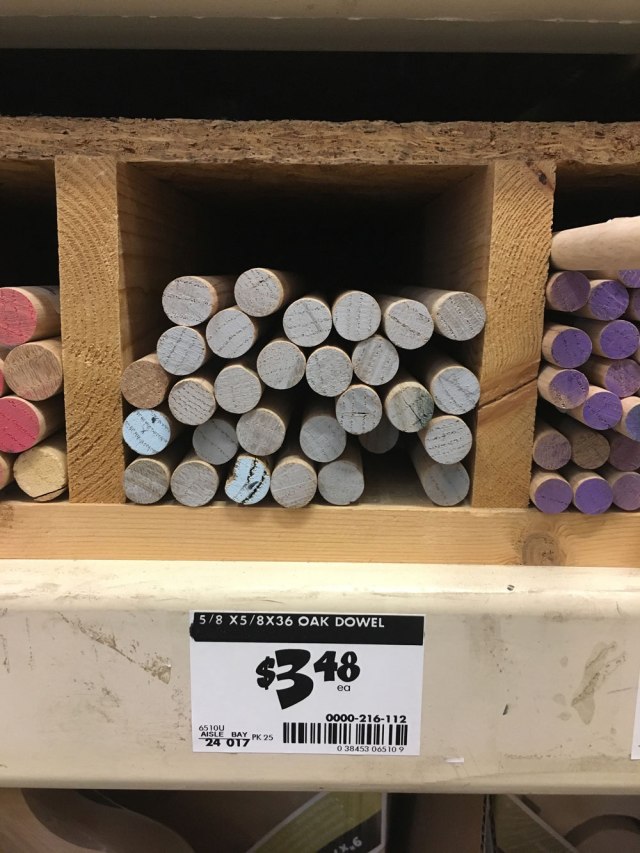
Sometimes I get asked if I use dowels for the spindles in my chairs. And sometimes I answer: “Sometimes.”
Dowels can be a crappy way to make a chair, just like lumberyard wood can be a crappy way to make a seat. Or cow tongue can be a crappy way to make a nice goulash.
For me, it all comes down to how the material is cut and dried. I cannot always get rivable material for my chairs, and so I will cut it out on the band saw, making sure the grain is arrow straight through the thickness and length. This wastes a little wood, but once you get good at picking stock at the lumberyard (hint, look at the edges), you can find dang straight stuff.
And if I can find dowels (home center dowels even! For shame!) where the grain is arrow straight, then what’s the harm? I will dry them, compress the ends and shape them with a gunstock scraper to taper them – just like its rived cousin.
I know this ain’t pure, and the Greenwood Gods are frowning or whittling out a spear to chuck my direction. But I think this is a pragmatic and valid path to build a folk chair. If you select your stock with care – in the forest or at the home center – and your understand the material, you can build a chair.
Don’t let your limitations stop you from making a chair. Work with what you have. If you can get a log, get a log. If you can’t get a log, get straight stuff.
Today I went to Home Depot to check out their selection of 5/8” oak dowels. I pulled out all 30 and rolled them on the floor, looking for defects and poker-straight grain. (Yes, you will get Evil Eye for this.) I found eight dowels that were either completely straight or had long straight sections. I need only six to build a chair.
I bought them. This saved me about three hours of shaving.
— Christopher Schwarz